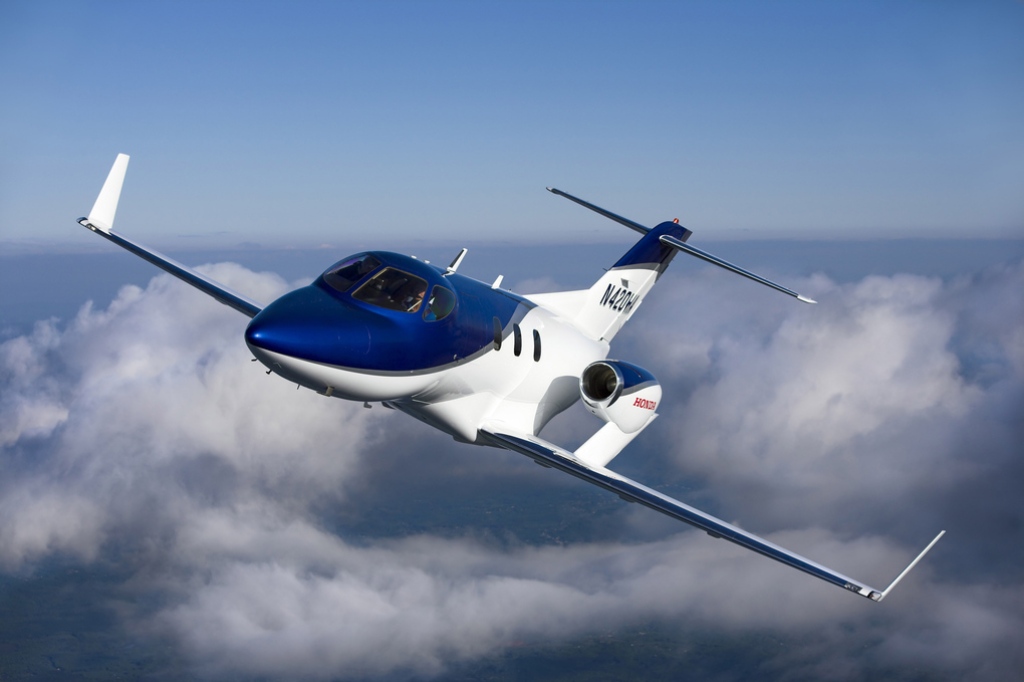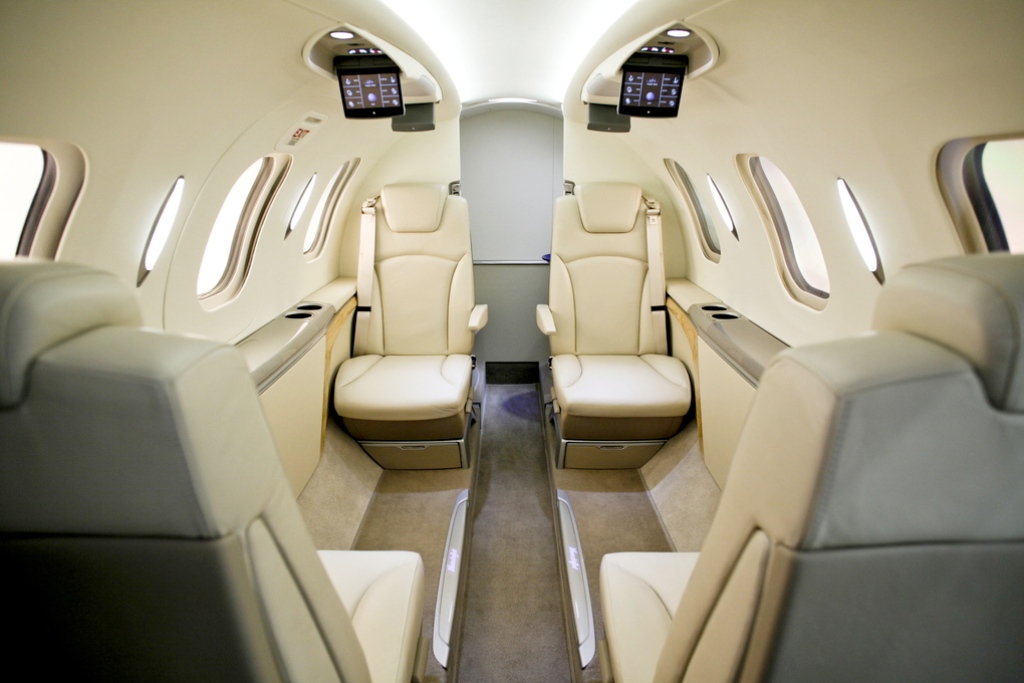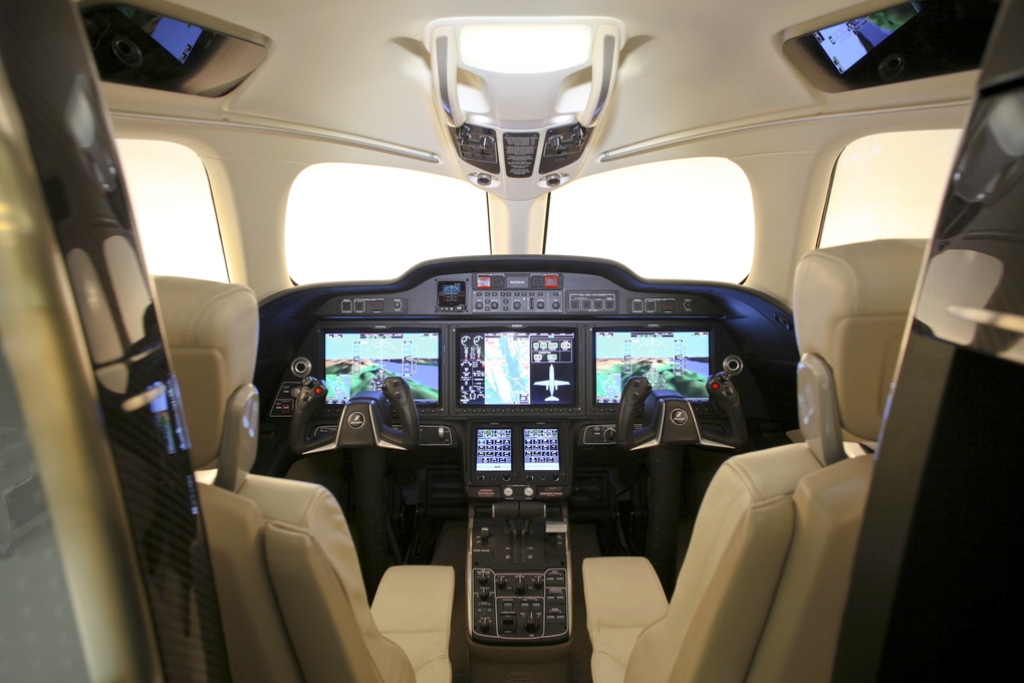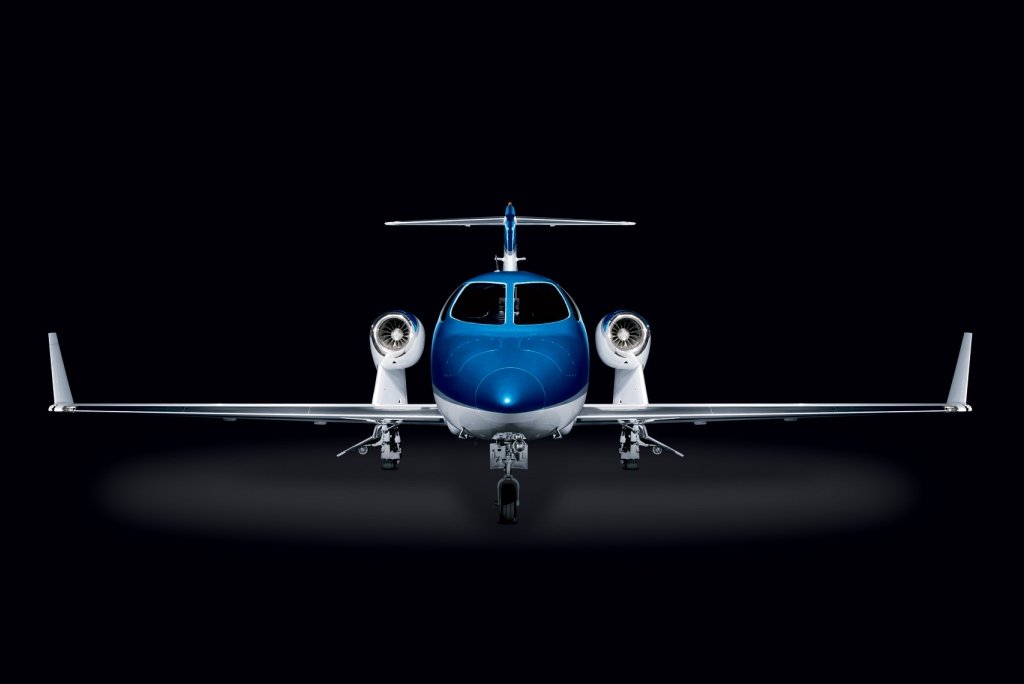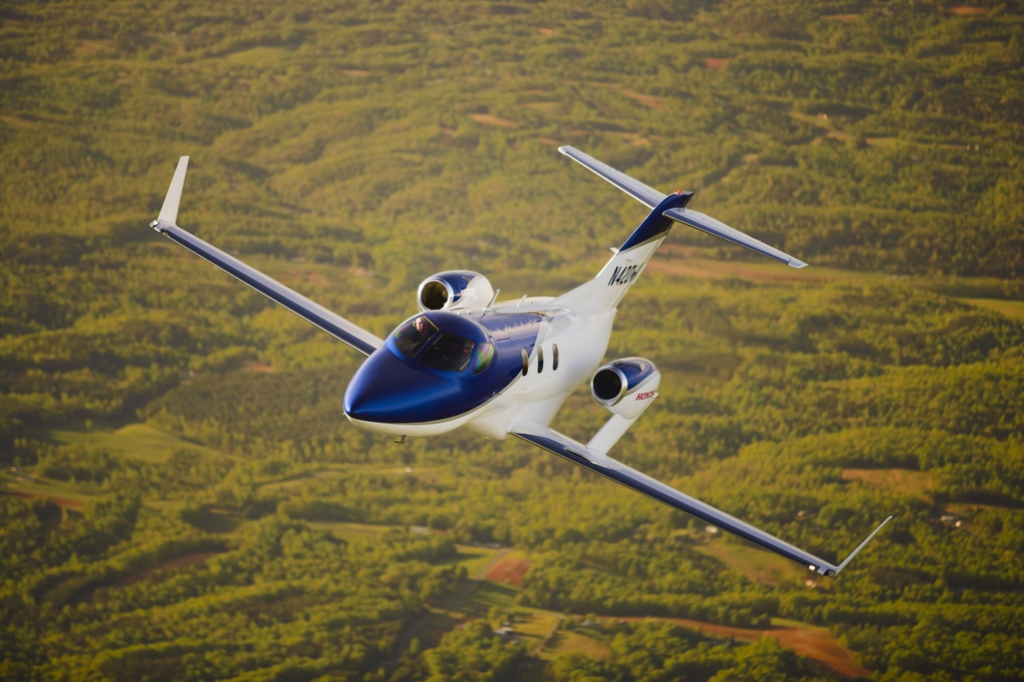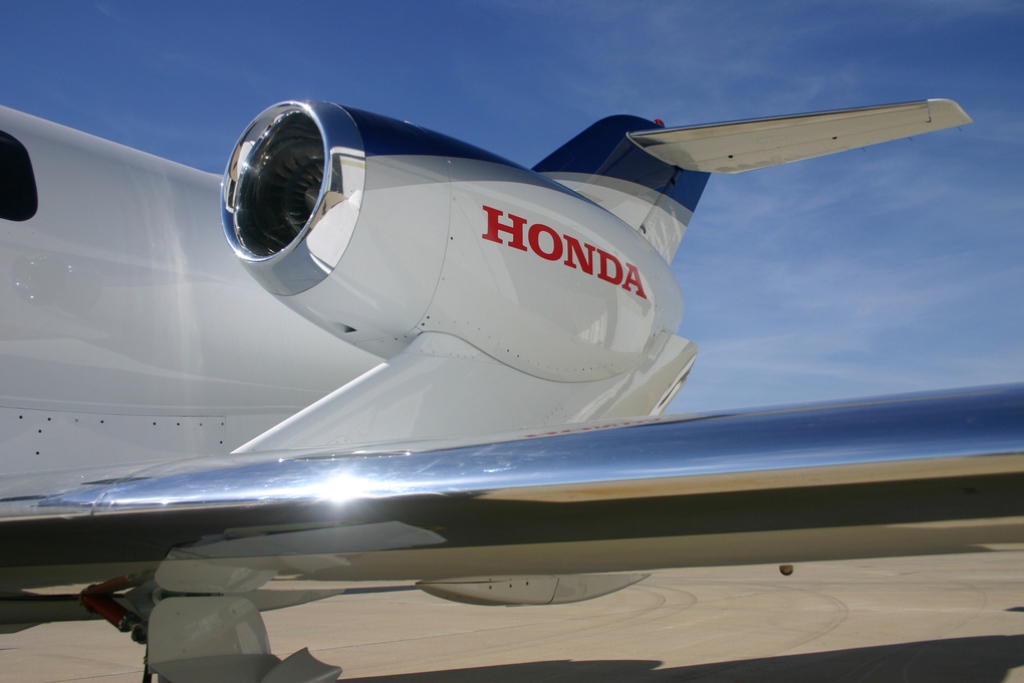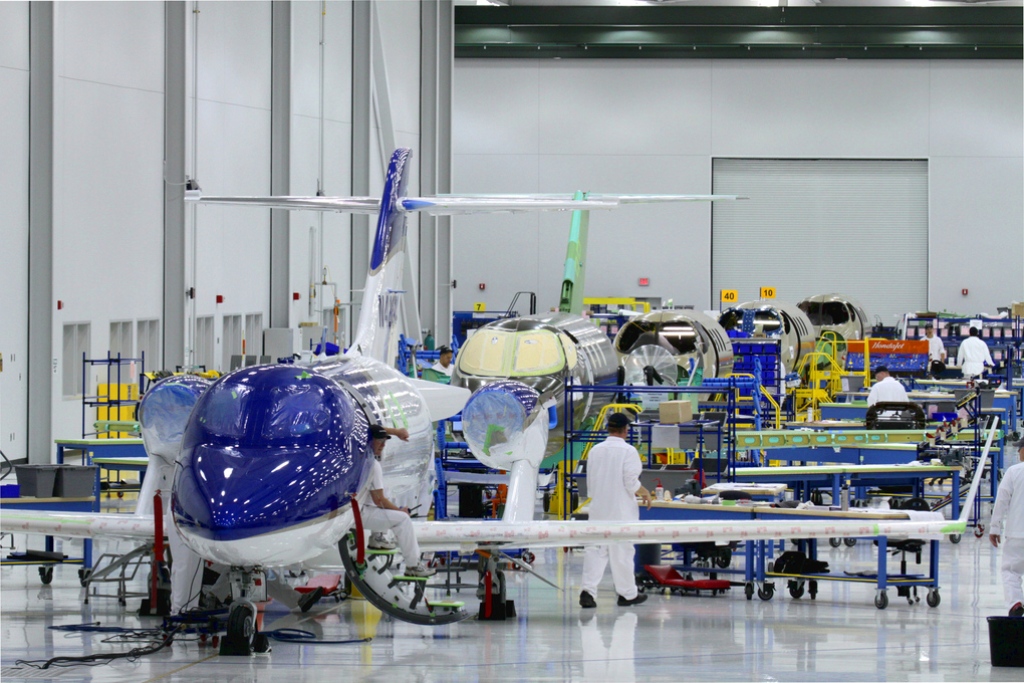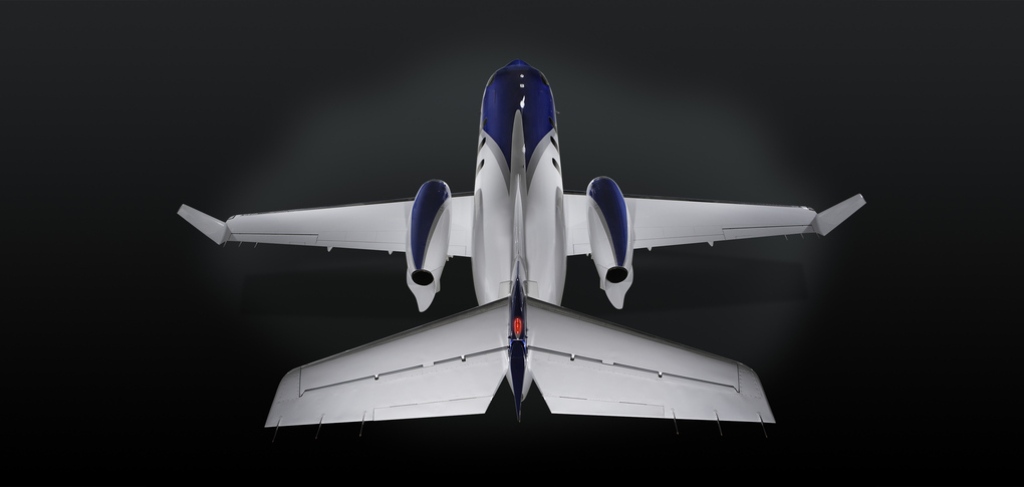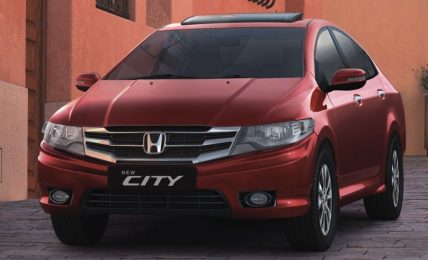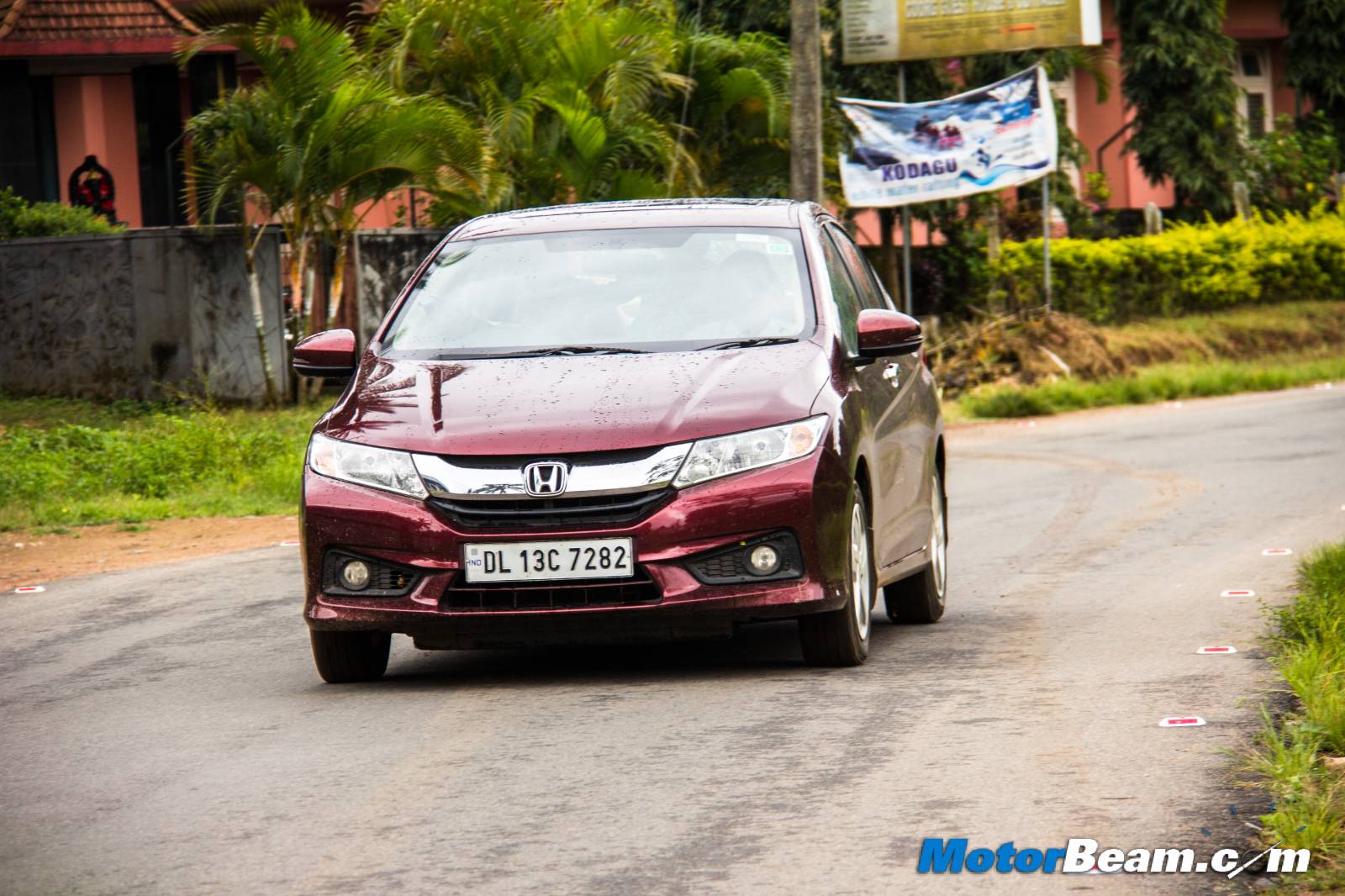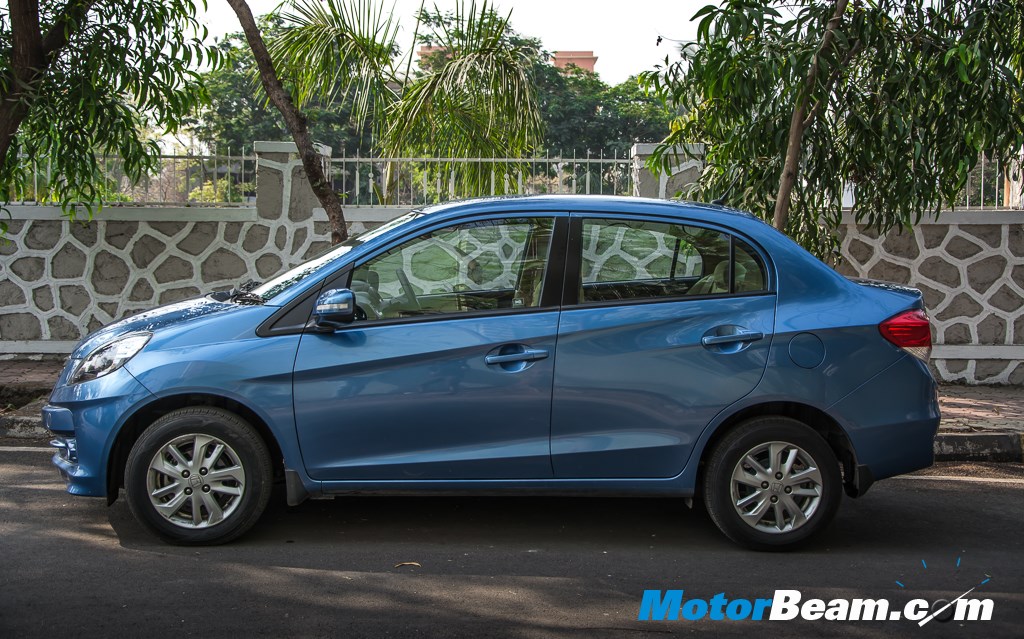Honda has been primarily known for making a reliable fleet of automobiles, two-wheelers and lawn mowers that have been the company’s strength. However, Honda has also diversified into a number of innovative streams which include humanoid robotics (remember Asimo). Now, sticking to the original philosophy of the company, the Japanese company has taken a plunge into the aviation industry with the innovative HondaJet, its first commercial aircraft. While reliable it is, the aircraft packs in a lot more than what meets the eye.
The Japanese auto giant has been studying about small jets since over four decades now, before finally realizing the dream of building the aircraft of the future. The HondaJet’s innovation lies in the differently mounted engine. The aircraft features a unique engine layout that has been developed in partnership with General Electric. The HondaJet’s HF10 turbofans are mounted on the pedestals that rise from the wings, instead of being on either side of the rear of the fuselage.
This helps in dispersing much of the engine noise away from the fuselage, saving passengers from the ear-shattering noise as experienced by occupants in other aircrafts. Honda states that the over-wing design gives the cabin a useable experience by removing interior super structure needed to support the engines. Coming to the technical specifications of the HondaJet, the six passenger aircraft has a top speed of 778 km/hr and a total range of 2185 kms. The HondaJet gets state of the art Garmin G3000 avionics suite.
So what does this mean for the stupendously rich? Honda’s new technology makes the jet surprisingly a tad bit affordable. It maye not be as affordable as an Accord or even an Acura, but it will be affordable enough to make private aviation within the reach of the wealthy few. The difference being it will cater to a larger audience that are 1 percent rich, rather than 0.1 percent. When the HondaJet is available commercially by next year, the aircraft is expected with a price tag of $4.5 million (Rs. 26.49 crores) and will be produced in North Carolina, USA. The jet is now on its final assembly and is waiting for certification from the Federal Aviation Administration.


